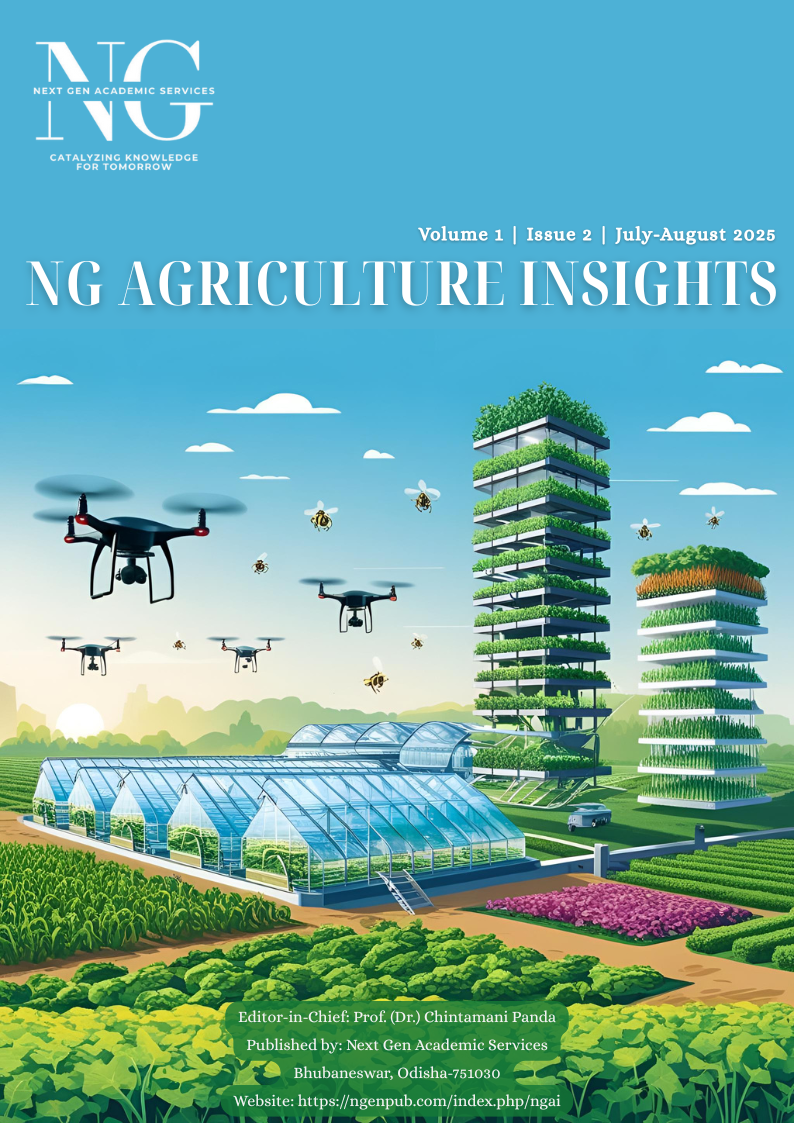Harnessing GIS and Precision Tools for Smarter Farming
DOI:
https://doi.org/10.5281/zenodo.15800788Keywords:
Geographic Information Systems (GIS), Precision Farming, Resource Optimisation, SustainabilityAbstract
The use of Geographic Information Systems (GIS) and precision farming technologies is a revolutionary change that revolutionises modern agriculture in efficiency, sustainability, and productivity. Capturing the farm in detail using sophisticated farm mapping and synchronous data gathering using sensors, satellites and drones allows farmers to know what is going on with their fields in ways never possible in the past. Such technologies allow allocating resources accurately, optimising water, fertilisers, and pesticides consumption and achieving maximum harvest and limited effects on the environment. With remote sensing, it is possible to monitor the health of crops in real time and, therefore, detect problems as early as possible to quickly and effectively address them. With further technological development, the prospect of farming will be related to the even stronger use of AI, machine learning, and IoT to integrate them to achieve more complex and efficient systems. It is important to introduce the use of GIS and precision tools in view of achieving global food security without compromising the environment, which will enable the realisation of a sustainable agricultural landscape in the future.
References
Aditya, P., Rao, V., Mohapatro, S., Chandra, V., Nanda, C., & Suman, S. (2023). Future trends in protected cultivation: A review. The Pharma Innovation Journal, 12(8), 2025-2029.
Atalla, S., Tarapiah, S., Gawanmeh, A., Daradkeh, M., Mukhtar, H., Himeur, Y., Mansoor, W., Hashim, K. F. B., & Daadoo, M. (2023). IoT-Enabled Precision Agriculture: Developing an Ecosystem for Optimized Crop Management. Information, 14(4), 205. https://doi.org/10.3390/info14040205
Baimuratov, A., Bastaubayeva, S., Arslan, M., & Yeraliyeva, Z. (2021). Effect of fertilizer application on winter wheat productivity under precision agriculture in Kazakhstan. Biodiversitas: Journal of Biological Diversity, 22(3). https://doi.org/10.13057/biodiv/d220362
Gawande, V., Saikanth, D. R. K., Sumithra, B. S., Aravind, S. A., Swamy, G. N., Chowdhury, M., & Singh, B. V. (2023). Potential of Precision Farming Technologies for Eco-Friendly Agriculture. International Journal of Plant & Soil Science, 35(19), 101–112. https://doi.org/10.9734/ijpss/2023/v35i193528
Ma, D., Wang, L., Zhang, L., Song, Z., U. Rehman, T., & Jin, J. (2020). Stress Distribution Analysis on Hyperspectral Corn Leaf Images for Improved Phenotyping Quality. Sensors, 20(13), 3659. https://doi.org/10.3390/s20133659
Prusty, A. K., Mohapatra, B. P., Rout, S., Pradhan, K., Tripathy, B., & Sahoo, G. (2021). Information Technology Emergence in Agriculture during COVID-19. Bulletin of Environment, Pharmacology and Life science, 10(9), 185-190.
Son, K.-H., Sim, H.-S., Lee, J.-K., & Lee, J. (2023). Precise Sensing of Leaf Temperatures for Smart Farm Applications. Horticulturae, 9(4), 518. https://doi.org/10.3390/horticulturae9040518
Suman, S., Deb, A., Prusty, A. K., Sameer, S., Divya, B. S., & Saha, S. (2024, December). Utilizing blockchain, IoT and machine learning for transparent agri-extension and resource distribution: A review. In 2024 2nd International Conference on Signal Processing, Communication, Power and Embedded System (SCOPES) (pp. 1-6). IEEE. https://doi.org/10.1109/SCOPES64467.2024.10991113
Downloads
Published
Issue
Section
License
Copyright (c) 2025 Rajib Kumar Majhi

This work is licensed under a Creative Commons Attribution 4.0 International License.





